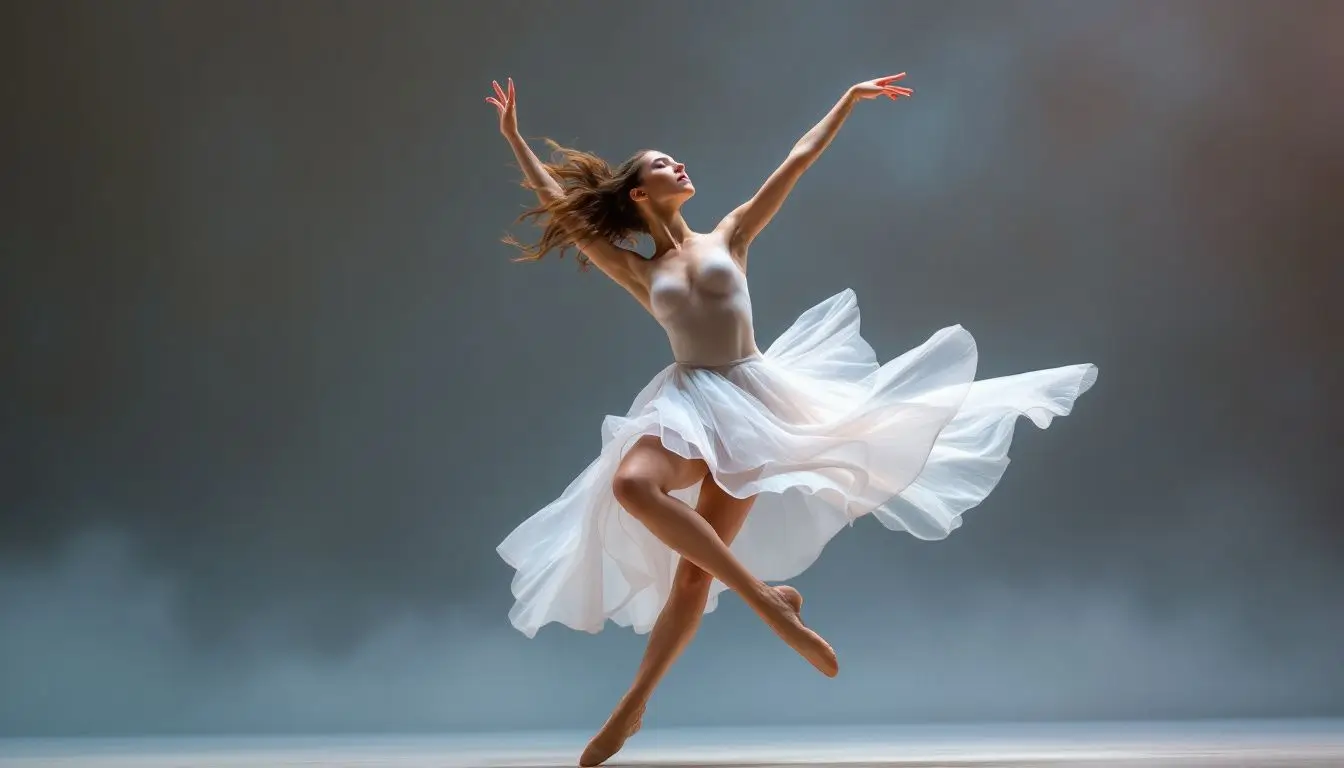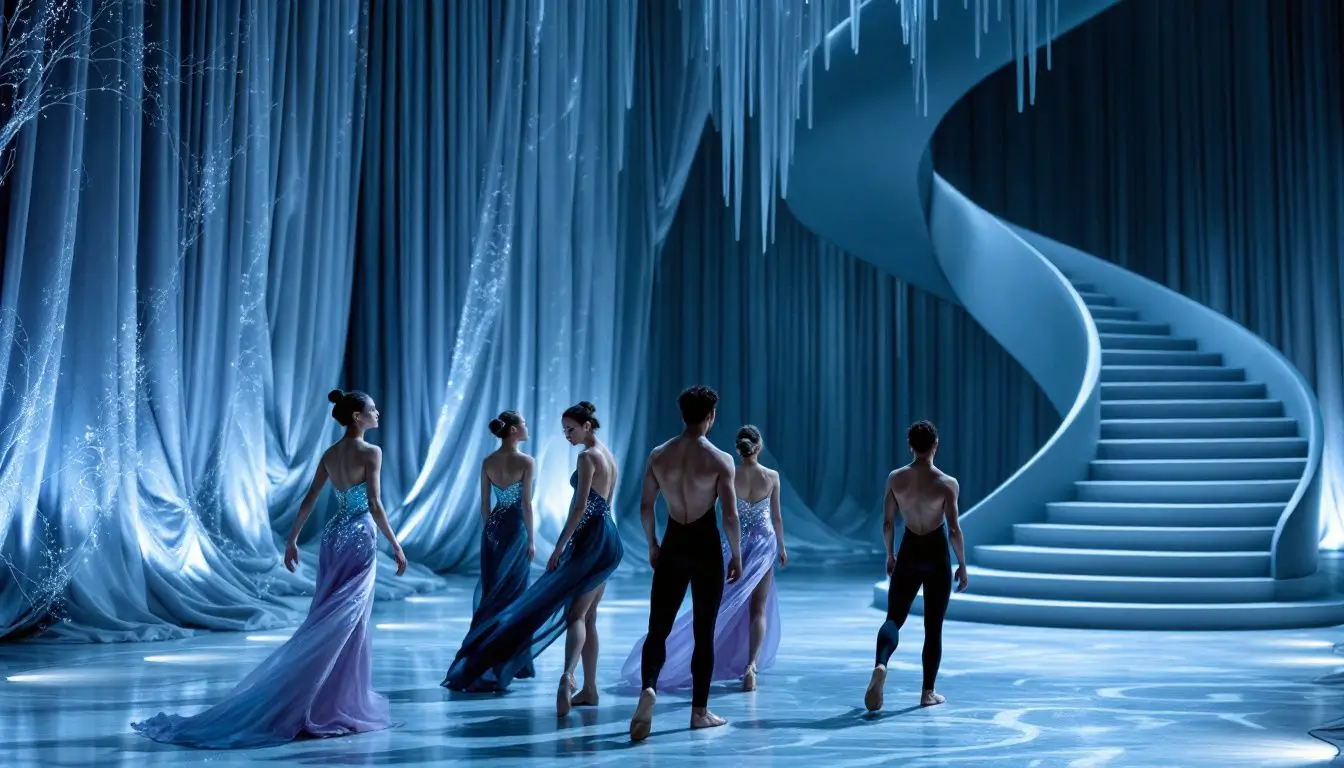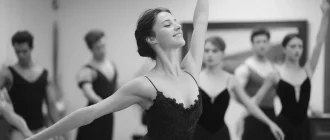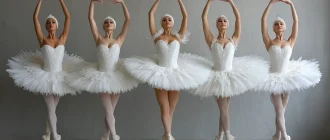Contemporary ballet is a dance form that combines classical ballet techniques with modern elements. It offers the grace and precision of classical ballet while incorporating the freedom and creativity of modern dance. This article will explore contemporary ballet, including its defining features, historical evolution, key characteristics, influential choreographers, prominent companies, and other aspects.
Graceful Insights
- Contemporary ballet fuses classical techniques with modern dance elements, emphasizing individual creativity and emotional storytelling.
- Since the early 20th century, the art form has evolved, integrating diverse influences to expand its reach and engage audiences with complex themes.
- Key characteristics include a departure from traditional pointe shoes, incorporating multimedia elements, and innovative choreography from influential and modern choreographers. Traditional ballet technique forms the foundation for contemporary ballet, providing the classical vocabulary and specific movements that have evolved through various eras.
Art de Podcast
| Aspect | Description |
|---|---|
| Definition | A fusion of classical ballet techniques and modern dance elements. |
| Origin | It emerged in the mid-20th century as dancers began experimenting with blending traditional and modern styles. |
| Key Characteristics | – Use of classical ballet foundation (pointe work, turnout) |
| – Incorporates fluid and natural movements from modern dance | |
| – Emphasis on emotional expression and storytelling | |
| – Unconventional music and staging | |
| Famous Choreographers | – George Balanchine |
| – William Forsythe | |
| – Twyla Tharp | |
| Notable Companies | – Nederlands Dans Theater |
| – American Ballet Theatre (Contemporary works) | |
| – Alonzo King LINES Ballet | |
| Popular Works | – “Jewels” by George Balanchine |
| – “In the Middle, Somewhat Elevated” by William Forsythe | |
| – “In C” by Alonzo King | |
| Audience Appeal | Combining ballet’s precision with modern dance’s freedom and creativity makes it accessible and relatable. |
| Training | Ballet and modern dance training are essential, often emphasizing flexibility, strength, and versatility. |
| Comparison to Ballet | – More fluid and experimental than classical ballet |
| – Greater use of torso and upper body movements | |
| – Freedom in musical choice and interpretation | |
| Where to See It | Major theaters, dance festivals, and independent dance productions worldwide. |
Defining Contemporary Ballet

Contemporary ballet fuses classical ballet technique with modern dance elements, forming a unique style. While contemporary ballet dance often abandons traditional ballet techniques, it retains them, integrating the freedom and creativity that incorporates elements of modern dance.
Neoclassical ballet, primarily credited to George Balanchine, combines classical techniques with modern, abstract movement and influences contemporary ballet.
Contemporary ballet emphasizes individual creativity and emotional storytelling. It often breaks from classical conventions, blending various dance forms and techniques. This flexibility allows choreographers to experiment and express their artistic visions beyond traditional ballet rules.
Contemporary ballet showcases a harmonious blend of traditional ballet techniques and modern dance influences, creating a dynamic and expressive form that resonates deeply with audiences. Choreographers push boundaries, merging different styles and approaches to craft innovative performances, including contemporary dance ballet and contemporary dance.
A specific article in a world-renowned dance magazine can provide further insights from various choreographers about the elusive definition of contemporary ballet.
Contemporary ballet merges the past with the present, honoring ballet’s history while embracing modern influences. This fusion incorporates elements to create a rich, multifaceted dance form that evolves and inspires dancers and audiences.
Historical Evolution of Contemporary Ballet
The roots of contemporary ballet date back to the early 20th century, with key figures like Serge Diaghilev. His creation of the Russian Ballet Company in 1909 departed from traditional ballet. It introduced innovative choreography and artistic director collaborations, laying the groundwork for the fusion of classical and modern dance.
Over the decades, contemporary ballet has evolved, with traditional ballet companies incorporating contemporary works into their repertoires. This evolution has expanded its reach and appeal, making it a staple in the global dance community. Emphasizing emotional depth and complex themes, contemporary choreographers explore new artistic territories and engage audiences in thought-provoking ways. William Forsythe’s innovative use of the pointe shoe, contrasting with Jiří Kylián’s style, did not incorporate them, highlighting the significance of pointe shoes in enhancing ballet technique and creativity within ballet and contemporary dance narratives.
Contemporary ballet is vibrant and dynamic today, celebrated for innovative choreography and diverse performances. Its historical evolution reflects a blend of classical and modern influences, resulting in a genre rooted in tradition yet open to new ideas and possibilities.
Key Characteristics of Contemporary Ballet

Contemporary ballet blends classical and neoclassical techniques with modern dance influences. Like neoclassical ballet, contemporary ballet combines classical techniques with abstract movement. From George Balanchine’s neoclassical style to avant-garde approaches, this fusion exemplifies the blend of classical, neoclassical, and contemporary styles, incorporating flexed hands and off-centered positions.
Contemporary ballet often avoids using pointe shoes, favoring grounded movements that reflect a shift toward a more natural and expressive dance form. This departure from traditional techniques to wearing pointe shoes allows for exploring new movements and styles en pointe alone, pushing ballet’s boundaries.
Contemporary ballet choreographers experiment with and incorporate multimedia elements into their performances. This innovation enriches contemporary ballet with diverse music styles, stage designs, and costumes. Its key characteristics merge classical ballet’s technical precision with modern dance’s expressive freedom.
Influential Contemporary Ballet Choreographers

Numerous influential choreographers have shaped contemporary ballet by pushing the art form’s boundaries. They honor ballet’s rich history while innovating to address current societal themes. Many contemporary choreographers build upon traditional ballet techniques to create new and exciting works.
The following sections will explore pioneers and modern visionaries who have significantly contributed to contemporary ballet.
Pioneers in Contemporary Ballet
Lester Horton integrated racial diversity into dance, heavily influenced by Native American dance forms. His work laid the foundation for future choreographers to incorporate diverse cultural elements into their ballet creations.
Robert Garland, a former principal dancer and artistic director at the Dance Theatre of Harlem, merges classical ballet with contemporary movement in his choreography. His innovative approach to choreography has significantly impacted contemporary ballet, inspiring many dancers and choreographers to explore new artistic directions.
Annabelle Lopez Ochoa is acclaimed for her visually intricate ballets, which reinterpret classical narratives in modern contexts. Her work exemplifies the creative possibilities of contemporary ballet, blending traditional techniques with modern dance elements to create captivating performances.
Pioneers like George Balanchine’s neoclassical ballet influenced the development of contemporary ballet by combining classical techniques with modern, abstract movements. These pioneers significantly shaped contemporary ballet by introducing new styles, narratives, and methods.
Modern Visionaries
Mikhail Baryshnikov’s leadership at the American Ballet Theatre in the 1980s integrated modern dance elements into ballet, showcasing works like Twyla Tharp’s ‘Push Comes To Shove.’ His influence continues to inspire new generations of dancers and choreographers.
Darrell Grand Moultrie combines ballet with modern and cultural movements in his company, showcasing his versatility as an artistic director. Katy Pyle’s Ballez company reimagines classical ballets to include LGBTQ+ narratives, challenging traditional representations of romantic ballet and expanding contemporary ballet’s inclusivity.
Christopher Wheeldon is known for his craftsmanship, merging traditional styles with innovative concepts in his choreography. These modern visionaries reshape contemporary ballet with unique styles and perspectives, ensuring the art form continues to evolve and inspire.
Prominent Contemporary Ballet Companies
Several contemporary ballet companies lead the art form, showcasing innovative choreography and diverse performances. The Joffrey Ballet, founded by Robert Joffrey in 1957, has played a significant role by incorporating modern dance elements and eclectic music in its performances.
These companies advance contemporary ballet’s boundaries and influence future generations of dancers and choreographers. Leading companies feature productions that explore various themes, choreographed styles, and audience engagement methods.
Prominent companies like the New York City Ballet, Dutch National Ballet, and Royal Ballet continue to push the boundaries of ballet, offering performances that captivate and inspire audiences worldwide. Their contributions ensure that contemporary ballet remains dynamic and evolving.
The Role of Music in Contemporary Ballet

Music plays a crucial role in contemporary ballet, with choreographers selecting various styles, including pop, rock, and electronic, to match dynamic choreography. Contemporary ballet music is generally more rhythmic and energetic than classical, highlighting ballet dancers” athleticism.
Choreographers like Mark Morris view music as a blueprint, crafting choreography to mirror the structure and emotions in the score. This thoughtful music selection sets the tone and atmosphere, shaping the audience’s perception. The music’s rhythm can dictate the dancer’s body, pace, and movement style, influencing choreographic planning.
Live music during performances can create a deeper connection between the audience and dancers, allowing for spontaneity and enhanced energy. Some choreographers choose to perform in silence, letting their movements speak independently. Music’s role in contemporary ballet is multifaceted, enhancing storytelling and emotional impact.
Costumes and Stage Design in Contemporary Ballet

Costumes and stage design are integral to contemporary ballet, enhancing performances’ visual and emotional impact. Fashion designers influence ballet costume design by introducing innovative aesthetics and materials, blending artistic expression with technical performance needs. Modern ballet costumes often draw inspiration from contemporary fashion, integrating streetwear elements to create a unique aesthetic for modern audiences.
The evolution of female ballet costumes reflects a shift toward greater freedom of movement, resulting in lighter, more flexible garments that enhance agility. The choice of fabrics is crucial, with materials like tulle and stretch fabrics providing the needed flexibility and support for dancers.
Stage design is vital in contemporary ballet. Creative and innovative sets complement choreography and music, creating a cohesive and immersive experience for the audience and highlighting the dancers’ artistry and technical prowess.
Training and Techniques for Contemporary Ballet Dancers
Contemporary ballet dancers receive extensive training in classical and modern techniques to enhance their versatility. This training involves working with various choreographers, each bringing a unique style and approach. Contemporary ballet often incorporates improvisation, challenging dancers to express themselves more freely than those accustomed to classical styles. Traditional ballet technique forms the foundation for contemporary ballet training, providing the essential classical vocabulary and movements that underpin various ballet styles.
Dancers develop versatility by blending techniques from various dance styles. Regular physical conditioning builds the strength and flexibility needed for contemporary ballet. This rigorous training prepares dancers to meet the demands of modern choreography, which often pushes physical and artistic limits.
Combining classical technique, modern training, improvisation, and physical conditioning creates technically proficient and deeply expressive dancers. This combination allows contemporary ballet to continue evolving and captivating audiences worldwide.
Resume
Contemporary ballet is a dynamic and ever-evolving art form that blends the precision of classical ballet with the expressive freedom of modern dance. From its historical roots to its key characteristics and influential choreographers, contemporary ballet continues to push the boundaries of what dance can be. Major companies and innovative choreographers are at the forefront, ensuring this genre remains vibrant and relevant.
As we look to the future, contemporary ballet promises to keep evolving, incorporating new styles, techniques, and cultural influences. Its ability to merge tradition with innovation makes it a powerful medium for storytelling and artistic expression. Whether you are a dancer, choreographer, or simply an admirer of the arts, contemporary ballet offers a rich and inspiring experience that continues to captivate audiences worldwide.







